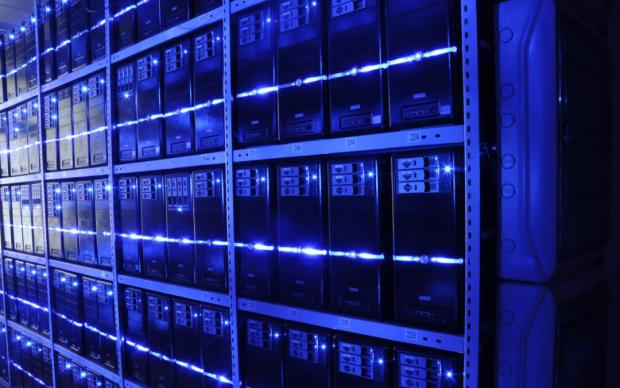
Breaking News
 Operation Mockingbird: The CIA lied to you this whole time
Operation Mockingbird: The CIA lied to you this whole time
 American Academy of Pediatrics threatens PARENTAL RIGHTS with federal mandates...
American Academy of Pediatrics threatens PARENTAL RIGHTS with federal mandates...
 Texas AI data centers drain water supply as residents face drought restrictions and shower limits
Texas AI data centers drain water supply as residents face drought restrictions and shower limits
 SpaceX's Crew-11 astronauts arrive at the International Space Station (video)
SpaceX's Crew-11 astronauts arrive at the International Space Station (video)
Top Tech News
 The mitochondria are more than just the "powerhouse of the cell" – they initiate immune...
The mitochondria are more than just the "powerhouse of the cell" – they initiate immune...
 Historic Aviation Engine Advance to Unlock Hypersonic Mach 10 Planes
Historic Aviation Engine Advance to Unlock Hypersonic Mach 10 Planes
 OpenAI CEO Sam Altman Pitches Eyeball-Scanning World ID to Bankers
OpenAI CEO Sam Altman Pitches Eyeball-Scanning World ID to Bankers
 New 3D-printed titanium alloy is stronger and cheaper than ever before
New 3D-printed titanium alloy is stronger and cheaper than ever before
 What is Unitree's new $6,000 humanoid robot good for?
What is Unitree's new $6,000 humanoid robot good for?
 "No CGI, No AI, Pure Engineering": Watch Raw Footage Of 'Star Wars'-Style Speeder
"No CGI, No AI, Pure Engineering": Watch Raw Footage Of 'Star Wars'-Style Speeder
 NASA's X-59 'quiet' supersonic jet rolls out for its 1st test drive (video)
NASA's X-59 'quiet' supersonic jet rolls out for its 1st test drive (video)
 Hypersonic SABRE engine reignited in Invictus Mach 5 spaceplane
Hypersonic SABRE engine reignited in Invictus Mach 5 spaceplane
 "World's most power dense" electric motor obliterates the field
"World's most power dense" electric motor obliterates the field
 The Wearables Trap: How the Government Plans to Monitor, Score, and Control You
The Wearables Trap: How the Government Plans to Monitor, Score, and Control You
Texas AI data centers drain water supply as residents face drought restrictions and shower limits

A recent investigation reveals that Texas data centers, led by Microsoft's sprawling Stargate campus in Abilene, consumed a staggering 463 million gallons of water in 2023 and 2024 alone. Projections suggest this number could skyrocket to 400 billion gallons by 2030, accounting for nearly 7% of the state's total water consumption. Unchecked expansion is threatening Texas's already strained water resources, with much of the cooling water evaporating into thin air, never to be recycled.
The hidden cost of AI's water hunger
Data centers, the backbone of artificial intelligence and cloud computing, require vast amounts of water to cool their overheating servers. Unlike residential water use, which can be conserved and recycled, much of the water used for industrial cooling is lost to evaporation. Robert Mace, executive director of The Meadows Center for Water and the Environment at Texas State University, emphasized the severity of the issue: "People don't think of data centers as industrial water users, but they are. Once that water evaporates, it's just gone."
The numbers are staggering. According to the Texas Water Development Board, data centers are projected to consume 49 billion gallons in 2025—a figure that could balloon to 399 billion gallons by 2030. For context, that's enough water to supply millions of households annually. Meanwhile, cities like San Antonio enforce Stage 3 water restrictions, limiting lawn watering to once a week and imposing surcharges on excessive residential use. The contradiction is impossible to ignore: while everyday Texans are told to cut back, corporate giants face no such limits.
Microsoft, a major player in Texas's AI boom, has pledged to become "water positive" by 2030, meaning it aims to replenish more water than it consumes. The company points to water restoration projects and the use of recycled water where possible. But critics argue these efforts often occur far from the communities most affected by water shortages.
Transparency is another issue. Many water utilities only learn about new data center projects after construction begins, and some companies operate under shell entities or code names, avoiding public scrutiny.
A looming crisis for Texas's water future
The rapid growth of AI infrastructure is outpacing the state's ability to regulate it. While Texas lawmakers passed bipartisan legislation (Senate Bill 6) to manage energy demands from data centers during grid emergencies, no equivalent measures exist for water use.



